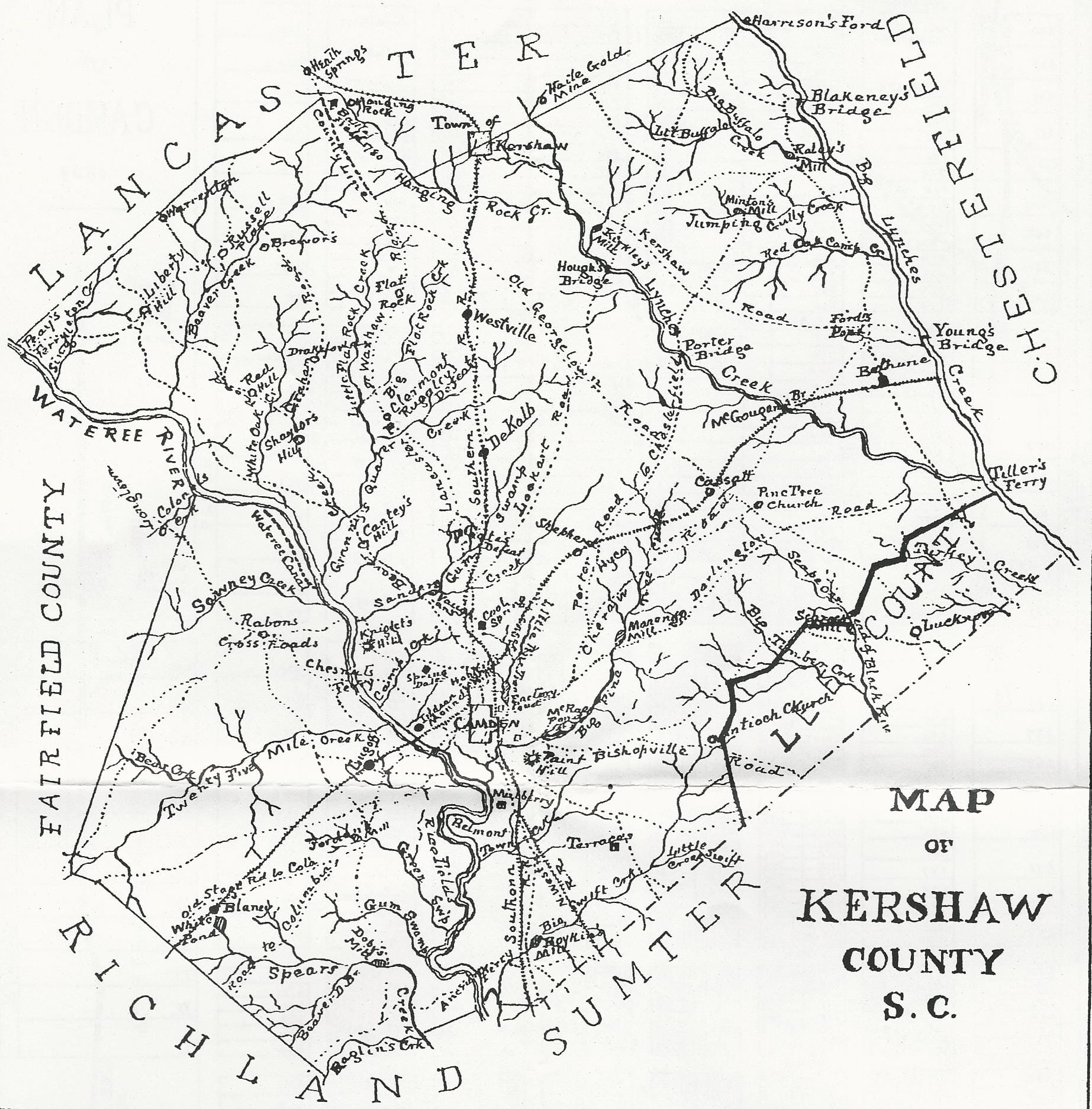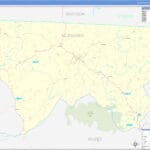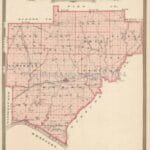Unlock the power of geographic information with comprehensive Kershaw County SC GIS data resources. Explore detailed spatial insights with the helpful resources available through the Laramie County GIS portal. This guide provides everything you need to know about accessing and utilizing Kershaw County’s GIS resources, whether you’re a resident, a business owner, or a researcher.
Navigating Kershaw County’s GIS Landscape
Geographic Information Systems (GIS) offer a powerful lens for understanding our world. In Kershaw County, South Carolina, GIS provides crucial insights into property lines, zoning regulations, tax assessments, floodplains, and much more. This guide simplifies accessing and interpreting this valuable data.
Kershaw County GIS Department: Your Go-To Resource
The Kershaw County GIS & 911 Addressing Office is the central hub for all geospatial data. They create, manage, and distribute this data to county offices and the public. Contact them via the Kershaw County official website for assistance. This central office maintains over 100 basemaps and utility data layers, providing a rich resource for understanding the county’s infrastructure and environment.
Exploring Kershaw County’s GIS Platforms
Kershaw County offers several avenues for accessing GIS data:
WTH GIS (kershawsc.wthgis.com) Review
WTH GIS provides interactive mapping with tools to search, identify features, email, print, measure distances, and obtain coordinates. Road closure information and other real-time public safety updates are also often available, making it particularly useful for staying informed during emergencies. For example, details of the County Line Road closure near Sawmill Road due to a washout on February 10, 2022, were readily accessible through this platform.
Strengths: Robust feature set, real-time updates, user-friendly interface.
Weaknesses: May require a learning curve for some users.
Official Kershaw County Website (kershaw.sc.gov) Review
The official website serves as a gateway to various county services, including GIS. While not as feature-rich as WTH GIS, it provides essential information and links to more specialized platforms.
Strengths: Centralized access point for all county services.
Weaknesses: May not provide the same level of interactivity as dedicated mapping platforms.
qPublic Review
qPublic is Kershaw County’s newest GIS platform. It integrates GIS, CAMA (Computer Assisted Mass Appraisal), assessment, and tax information into one web application. This consolidated approach likely simplifies property research by consolidating multiple data sources.
Strengths: Streamlined data access, integrates multiple key datasets.
Weaknesses: Being a newer platform, there may be occasional updates or adjustments as it develops.
County Office (countyoffice.org) Review
County Office is an independent platform compiling data from various sources. It grants access to Kershaw County’s urban planning data, zoning maps, tax maps, land records, flood zone maps, and parcel data. This aggregation of resources suggests it’s a valuable resource for researchers and those needing a broader perspective.
Strengths: Comprehensive data collection from multiple sources.
Weaknesses: As a third-party platform, the data may not be as up-to-the-minute as the official county resources.
Data Deep Dive: What’s Available?
Kershaw County’s GIS data encompasses a wealth of information, including:
- Property Boundaries: Precise locations of property lines, essential for property owners, real estate professionals, and surveyors.
- Zoning Information: Land use regulations and restrictions, critical for development planning and compliance.
- Tax Assessments: Property value estimations used for tax purposes, offering insights for homeowners and investors.
- Flood Zone Maps: Identification of flood-prone areas, crucial for disaster preparedness, insurance assessments, and development planning.
- Parcel Data: Comprehensive information about land parcels, including ownership, acreage, and other attributes.
- Basemaps (100+): Foundational map layers depicting streets, buildings, and topography, providing context for other data.
- Utility Data: Location of underground and above-ground utilities, essential for construction and emergency response.
Putting Kershaw County GIS to Work
This data empowers informed decisions across various scenarios:
- Property Research: Determine property lines, ownership history, zoning restrictions, and tax assessments.
- Development Planning: Analyze zoning regulations, flood risks, and utility locations for informed project development.
- Disaster Preparedness: Identify evacuation routes, flood-prone areas, and access critical infrastructure information.
- Community Development: Understand demographic trends, plan infrastructure improvements, and allocate resources effectively.
The Future of Kershaw County GIS
Kershaw County is committed to expanding its GIS resources. Future developments may include enhanced user interfaces, increased data integration, and possibly mobile apps for accessing GIS data on the go. These anticipated advancements suggest a dynamic and evolving GIS landscape in Kershaw County.
Understanding Property Taxes in Kershaw County
Kershaw County’s property tax system isn’t a one-size-fits-all. Your tax bill results from your property’s assessed value combined with multiple millage rates levied by the county, city, schools, and other taxing districts. While the median property tax is approximately $528 annually for a home valued at $110,800 (about 0.48%), remember, individual rates will vary. Homeowners may qualify for a homestead exemption, reducing their tax burden. It’s important to note that failure to pay property taxes on time can lead to penalties, interest, and even foreclosure. For specific questions, contact the Kershaw County Assessor or Treasurer’s office. They are the best resource for navigating the complexities of property tax calculations.
Lugoff, SC: A Kershaw County Gem
Lugoff, an unincorporated community within Kershaw County, has seen significant population growth, increasing from 7,434 in 2010 to almost 10,000 in 2020. This growth probably stems from several factors, including its proximity to Columbia, affordability, and small-town charm. Lugoff benefits from Kershaw County’s resources, including the encompassing GIS & 911 Addressing system, which ensures quick and accurate emergency response. As part of the Columbia, SC Metropolitan Statistical Area, Lugoff is influenced by the Wateree River and its geographic characteristics.
GIS in Georgia: A Broader Perspective
While this guide focuses on Kershaw County, it’s worth considering the broader application of GIS in neighboring states. Geographic Information Systems (GIS) in Georgia, for example, capture, store, analyze, and visualize geographic data. This technology supports state and local government, businesses, and educational institutions in areas like land management, transportation planning, emergency services, environmental monitoring, and market analysis. Data for these systems likely comes from various sources, potentially including a Georgia Spatial Data Infrastructure (GSDI), federal datasets from agencies like the USGS and Census Bureau, and possible state-level open data initiatives. Furthermore, professional organizations, such as local chapters of URISA and GITA, and other Georgia-specific GIS groups, play a crucial role in developing and utilizing GIS capabilities throughout the state. Finally, emerging technologies like drone mapping, LiDAR, and cloud-based GIS solutions suggest a future of continued advancements and broader applications of GIS in Georgia.
Conclusion
Kershaw County’s GIS resources offer invaluable insights for residents, professionals, and anyone seeking a deeper understanding of the area. By utilizing the platforms and data outlined in this guide, you can make more informed decisions related to property, development, and community engagement.
- China II Review: Delicious Food & Speedy Service - April 17, 2025
- Understand Virginia’s Flag: History & Debate - April 17, 2025
- Explore Long Island’s Map: Unique Regions & Insights - April 17, 2025
















